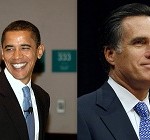Though U.S.-Indian relations have dipped from the high point they reached during the George W. Bush administration, when the countries signed an important civil nuclear agreement (TIME), they are still “in reasonably good shape,” says C. Raja Mohan, an expert on U.S.-India relations. President Obama’s November 2010 trip to India bolstered trade and economic ties and helped ease fears that Obama administration policies toward Pakistan and China would run counter to India’s interests, says Mohan. The two countries have differences on issues such as Iran and the Middle East, and some in Washington are frustrated “that the strategic partnership with India has not yielded the expected benefits,” says Mohan. Mohan says Indians watching how the U.S. presidential race shapes up show a growing appreciation of “how political developments within the United States can affect Indian interests.”
How are U.S.-Indian relations these days?
India-U.S. relations are in a reasonably good shape. But the kind of excitement that dominated the bilateral relations in the Bush era is certainly absent. This is due in part to the reluctance of the Obama administration to put a big, transformative issue like the civil nuclear initiative on the bilateral agenda. The focus instead is on deepening bilateral engagement and making steady progress on a broad range of issues. In Delhi, the Manmohan Singh government, which had invested much domestic political capital in reordering the relations with the United States during the Bush years, no longer has the political energy to pursue a bold agenda with Washington.
This article was originally published by the Council on Foreign Relations. You can read the rest of the article here.
You can read exclusive content from Gateway House: Indian Council on Global Relations, here.
Copyright © 2012 by the Council on Foreign Relations, Inc


